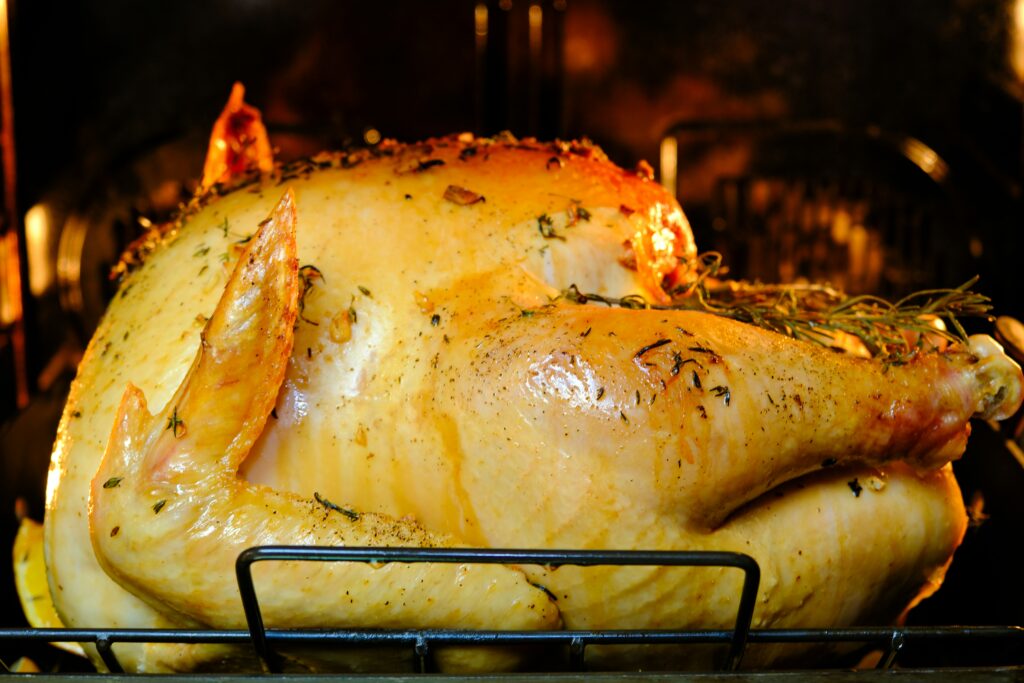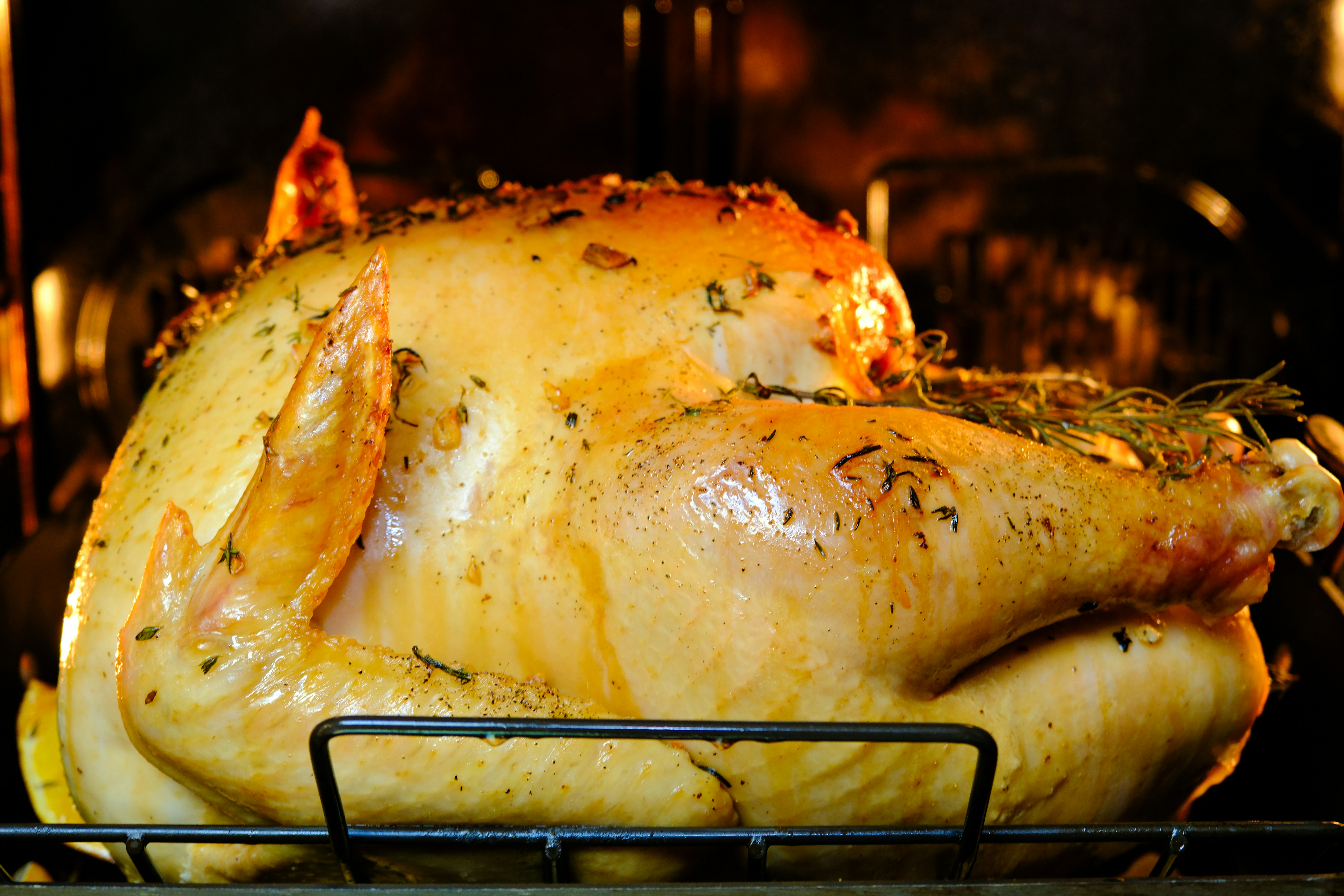
Ingredients You’ll Need
To create a succulent Thanksgiving turkey, it is essential to gather all necessary ingredients ahead of time. Here is a comprehensive list of components that you will need for an average-sized turkey, typically around 12 to 14 pounds.
Firstly, the main ingredient is, of course, the turkey itself. You will need one fresh or thawed turkey weighing approximately 12 to 14 pounds. It is advisable to purchase organic or free-range options for enhanced flavor and quality.
Next, for the seasoning, prepare the following spices and herbs:
- 1 tablespoon of salt
- 1 tablespoon of black pepper
- 2 teaspoons of garlic powder
- 2 teaspoons of onion powder
- 1 tablespoon of dried thyme or 3 sprigs of fresh thyme
- 1 tablespoon of dried rosemary or 3 sprigs of fresh rosemary
- 1 tablespoon of dried sage
In addition to these spices, you will need ingredients for the stuffing. For a classic stuffing, gather:
- 8 cups of cubed bread (preferably a day or two old)
- 1 cup of celery, finely chopped
- 1 cup of onion, finely chopped
- 2 cups of chicken broth
- 1/2 cup of unsalted butter
- 1 tablespoon of sage
- 1 teaspoon of thyme
Finally, for an accompanying sauce, prepare cranberry sauce using:
- 12 ounces of fresh or frozen cranberries
- 1 cup of sugar
- 1 cup of water
Gathering these ingredients will set you on the right path to creating a delightful Thanksgiving turkey that will impress your guests and loved ones.
Preparation Steps for the Perfect Turkey
To achieve a delectable Thanksgiving turkey, meticulous preparation is essential, starting with the proper thawing method. If your turkey is frozen, it is crucial to thaw it safely in the refrigerator, allowing approximately 24 hours of thawing time for every five pounds of turkey. This process helps maintain the meat’s quality and prevents bacterial growth. For instance, a 15-pound turkey will require at least three days to thaw completely. If time is a constraint, a cold-water method can be employed, which involves submerging the turkey in its original packaging in cold water, changing the water every 30 minutes. This method requires about 30 minutes of thawing per pound.
Once thawed, the next step involves cleaning and drying the turkey. Rinse the turkey under cold running water to remove any residual blood or fluids. After rinsing, it is essential to pat the turkey dry using paper towels. Ensuring that the turkey is dry is critical as it affects how well the skin crisps during roasting. At this stage, consider your brining or seasoning choices. Brining, either wet or dry, enhances flavor and moisture retention, creating a succulent turkey. If you choose to brine your turkey, make sure to prepare this well in advance of roasting to allow sufficient time for the process.
Additionally, if you plan to stuff your turkey, prepare the stuffing separately for optimal safety. Ensure that the stuffing, containing ingredients such as bread, herbs, and vegetables, is prepared no more than a few hours before roasting. A food thermometer is indispensable, allowing you to check that the turkey and stuffing reach the safe internal temperature of 165°F. Lastly, utilize a roasting pan that is both sturdy and large enough to hold the turkey comfortably, ensuring even cooking. With these preparation steps, you are setting the stage for a perfectly roasted turkey that will impress your guests.
Cooking Instructions: Step-by-Step Process
To achieve a perfectly roasted Thanksgiving turkey, begin by preparing your turkey a day in advance. Thaw the turkey in the refrigerator if it is frozen, allowing approximately 24 hours for every four to five pounds. Once thawed, remove the giblets and neck from the cavity, rinsing the turkey thoroughly under cool water before patting it dry with paper towels. Properly drying the turkey helps ensure a crispy skin upon roasting.
Next, preheat your oven to 325°F (163°C). This moderate temperature is crucial for even cooking. As the oven heats, season the turkey generously with salt and pepper both inside and out. Consider using herbs such as thyme, rosemary, or sage, and don’t forget to add garlic or onion for enhanced flavor. You may optionally stuff the turkey with a mixture of bread, vegetables, and herbs to infuse additional taste during the roasting process.
To begin roasting, place the turkey breast-side up on a rack in a roasting pan. For optimal results, cook the turkey for about 13 to 15 minutes per pound. As a general guideline, a 15-pound turkey will take approximately 3 to 4 hours to cook through. To maintain moisture, basting regularly with the drippings will help form a golden-brown skin. If the skin browns too quickly, cover the breast loosely with aluminum foil.
It is essential to monitor the internal temperature as you approach the estimated cooking time. The thickest part of the thigh should reach 165°F (74°C) and the stuffing, if used, should also register the same temperature. Once cooked, let the turkey rest for at least 30 minutes before carving, allowing the juices to redistribute within the meat. Safe carving practices and serving techniques ensure a visually appealing presentation, and a delicious turkey will certainly be the centerpiece of any Thanksgiving feast.
Expert Tips for the Best Thanksgiving Turkey
To achieve a Thanksgiving turkey that impresses both visually and gastronomically, certain expert tips can significantly enhance your cooking experience. First and foremost, flavoring the turkey is crucial. A well-seasoned bird can transform a meal, so consider a dry rub or brining the turkey prior to roasting. A brine, which can incorporate herbs, spices, and even citrus, infuses moisture and flavor directly into the meat, producing a succulent result. Ensure that the brining process lasts at least 12 to 24 hours for maximum effectiveness.
Timing is another vital aspect of turkey preparation. After the turkey has finished cooking, allow it to rest for at least 30 minutes before carving. This resting period is essential for allowing the juices to redistribute throughout the meat, yielding a juicier turkey. Use this time to prepare your side dishes or set the table, making the overall meal feel more coordinated.
Planning for leftovers can also elevate your Thanksgiving feast. Consider how you might utilize your turkey remnants in meals after the holiday, with ideas ranging from turkey soup or salad to sandwiches and casseroles. This ensures that nothing goes to waste and allows for a continuous culinary celebration.
However, it is crucial to avoid common pitfalls, such as overcooking or uneven cooking. To mitigate these risks, use a meat thermometer to monitor the internal temperature, which should reach at least 165°F in the thickest part of the breast. Additionally, rotating the turkey halfway through the cooking process can facilitate even heat distribution, leading to a perfectly cooked meal.
By implementing these expert tips, you can elevate your Thanksgiving turkey to new heights, ensuring a memorable culinary experience for all your guests.

